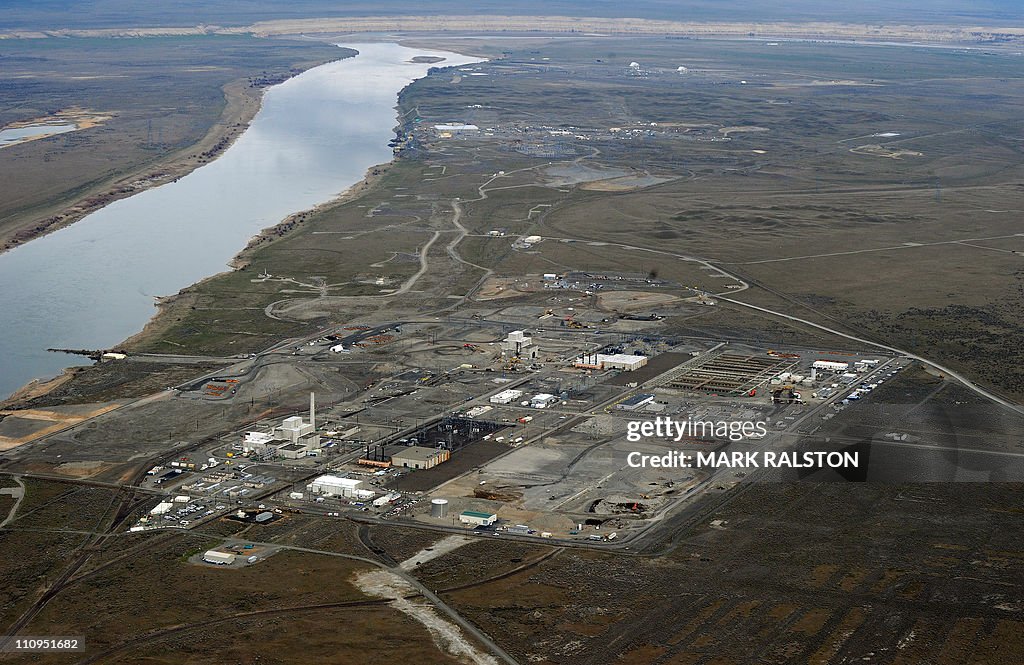TO GO WITH AFP STORY US-NUCLEAR-WEAPONS-
TO GO WITH AFP STORY US-NUCLEAR-WEAPONS-WASTE, FOCUS by Shaun Tandon(FILES) Workers demolish a decommissioned nuclear reactor during the cleanup operations at the Western hemisphere's most contaminated nuclear site in Hanford, Washington state on March 21, 2011. It sounded like a good idea at the time. Racing to build an atomic bomb during World War II, US authorities sealed off a pristine desert and created the first-ever plutonium reactor. Sixty-eight years later, Hanford remains off limits. Not because of weapons work, which has long ago ceased, but because it is the Western hemisphere's most contaminated nuclear site with 53 million gallons (200 million liters) of radioactive waste stored in aging tanks. With billions of dollars a year invested in cleanup, there is little palpable fear among residents here in the northwestern state of Washington. Some 12,000 people work at Hanford, which at 586 square miles (1,518 square kilometers) is twice the size of Singapore. AFP PHOTO/Mark RALSTON (Photo credit should read MARK RALSTON/AFP via Getty Images)

COMPRAR LICENCIA
¿Cómo puedo usar esta imagen?
475,00 €
EUR
DETALLES
Restricciones:
Póngase en contacto con su oficina local para conocer todos los usos con fines comerciales o promocionales. Derechos editoriales plenos en Reino Unido, EE.UU., Irlanda, Italia, España y Canadá (excepto Québec). Si desea conocer los derechos editoriales restringidos en otro país, llame a su oficina local.TO GO WITH AFP STORY US-NUCLEAR-WEAPONS-WASTE, FOCUS by Shaun Tandon
Crédito:
Editorial n.º:
110951682
Colección:
AFP
Fecha de creación:
21 de marzo de 2011
Fecha de subida:
Tipo de licencia:
Inf. de autorización:
No se cuenta con autorizaciones. Más información
Fuente:
AFP
Código de barras:
AFP
Nombre del objeto:
Was3813752